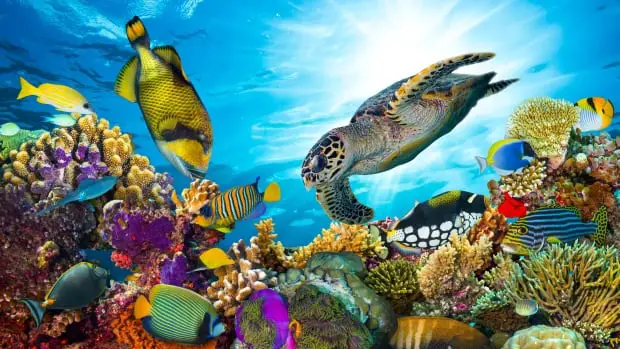Although coral reefs occupy less than 1% of the ocean floor, they are home to 25% of all known marine species. Canada, the second largest country in territory in the world, is surrounded by 3 oceans, all of them with a marine fauna of fish and animals that many Canadians depend on. Due to the global warming process, these immense waters are changing rapidly.
A new study published in the journal Nature indicates that the climates of these oceans, which are habitats that have delicately balanced ecosystems, face extreme change in climate change scenarios.
In trying to predict how the climate will change as a result of increased global warming gas emissions, scientists use a tool called Representative Concentration Paths, or CCRs, which represent different climate futures with different levels of greenhouse gas emissions (GGE).
In this study, the authors analyzed 2 types of these emissions: RCP 4.5 and RCP 8.5. Under RCP 4.5, considered a moderate scenario, emissions peak in 2050, followed by a slower increase. In the RCP 8.5 scenario, often viewed as a no-change and worst scenario, emissions peak at 2100 and then a slower rise occurs.
Changing conditions

Under these scenarios, the authors suggest that between 10% and 85% of the surface of the oceans would see conditions never seen before. That is a drastic change in global climate. What is alarming is that in the RCP 4.5 scenario, 35.6% of the surface ocean climates could disappear completely by 2100. In the RCP 8.5 scenario, that figure rises to 95%.
Previous studies have looked at specific places and said, ‘Okay, this place is getting hotter, or this place is getting acidic’. What we have done is look at the global ocean climate, explained study lead author Katie Lotterhos, a professor of marine and environmental sciences at Northeastern University’s Center for Marine Sciences in Nahant, Maine.
When they looked at ocean climates today compared to those of the 1800s, they did not see the emergence of new or never-before-seen climates. Certainly there were changes, but nothing that was totally new.
But the same cannot be said when looking to the future. When looking from today to the year 2100, depending on the climate change scenario, and under more extreme climate change scenarios, a greater proportion of the ocean surface is going to experience these new climates. This will have dire consequences for the organisms that reside in our vast oceans”, Lotterhos said.
The global impact will be double
As we produce more CO2, much of it is trapped in the atmosphere. However, our oceans absorb most of these emissions. A report released this week by the United States National Oceanic and Atmospheric Administration (NOAA) revealed that in 2020 the ocean absorbed some 3 billion tons of CO2 more than it has been released, the most since that the records began in 1982 and approximately 30% more than the average of the last 2 decades.
This situation significantly alters the structure of the oceans. Not only do they heat up, but increased CO2 absorption also changes pH levels. This change is what is called ocean acidification. The study in the journal Nature examined the level of pH, or acidity, and something called the saturation state that relates to how difficult it is for living organisms to form their seashells.
The researchers found that under the RCP 4.5 and RCP 8.5 scenarios, the ocean surface will become more acidic with less saturation of aragonite, which is a mineral used by corals and other marine organisms to form their shells.
In the same way that humans need calcium to build their bone structure, so do shell-bearing organisms. They get it from seawater, but with acidification of the oceans, calcium becomes less available and hydrogen becomes more common.
This represents a double problem for organisms; it will be more difficult for them to form their shells and it will also be more difficult to prevent the shells, of those that already have them, from dissolving in seawater.
Denis Gilbert, a climate and ocean physics researcher at the Department of Fisheries and Oceans, and part of Working Group I of the Intergovernmental Panel on Climate Change (IPCC), who was not involved in the new study, said that these findings are concerning, although he would not call them a change in oceanic climate, but rather a change in ocean chemistry.
I was surprised to see that by the year 2100, there was so much of the ocean that it had a totally different climate, either totally novel or totally extreme, he said. But it seems to me that the use of the word climate is a bit unfortunate. If the authors had chosen the word chemistry, it would better reflect what the article actually says.
Gilbert noted that while the study authors talk about ocean temperature, the main topic they address is pH and saturation levels, which is changing chemistry. The main thing about the study is that they are concerned about what will happen to the shells of certain animals, which calcify with aragonite, he concluded.

